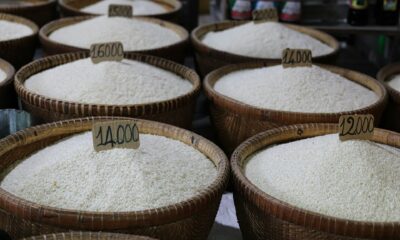Business
The secret behind the success in the dairy industry
Once the concept is understood, it is a very viable market trade and one that is necessary for those in the dairy industry to use to protect prices and income.

There have been traders and trading firms over the years that have seen the volatility in the dairy futures markets and decided that this could be taken advantage of and worth pursuing.
Technical traders watched this market with interest seeing the potential for significant profits if the direction was predicted correctly. The only downside was that the liquidity of the market was less than desired. However, this was offset by the fact that it was a cash-settled market and one that did not need to be offset before the possibility of taking delivery of the product. Volatility is what traders desire and dairy was a place where this was experienced quite regularly.
Many traders took the plunge and began building a clientele having an appetite for trading in a market with a substantial reward. Risks were understood, but the appeal for greater profits was the magnetism. Unfortunately, many traders lost substantial amounts of money and trading firms ceased trading in dairy futures in a short period of time.
This certainly does not diminish the necessity and efficiency of the dairy futures and options markets. It is just a market that is different from many other markets and one that needs to be understood in that context. One basic aspect of this market that needs to be understood is that futures are not the price discovery method of the final price. Futures are simply that of guessing what the future price is going to be. The primary price discovery method is the movement of underlying cash prices. Cheddar cheese in 40-pound block form, barrel (process) cheese, butter, and Grade A nonfat dry milk are traded daily in a physical delivery market that runs for 15 minutes or less (depending on activity) on a daily basis. This is what creates the volatility of the market. Dairy futures trade from 5 pm until 4 pm daily or 23 hours per day driven by the 15-minute cash trading period. Outside influences do have an impact on futures prices such as weather, grain prices, cow numbers, milk production, exports, holiday demand, seasonality, and inventories. But the bottom line is what takes place during the daily cash trading periods each day. Underlying cash certainly will be influenced by these outside influences, but generally not immediately. Hot and humid weather will decrease milk production at the farm which will, in turn, tighten milk supply. Higher grain prices may increase culling thereby reducing the nation’s dairy herd resulting in less milk production. Increased domestic demand and imports will have an impact on inventory as greater demand means less available for inventory. Reduced demand will have a negative impact on inventory as supplies grow. None of these scenarios change the market overnight, but they do increase volatility as traders anticipate future prices.
A key to understanding the dairy futures and options market is to understand what is driving prices and realizing futures are not the price discovery mechanism. Having said that, one needs to understand that technical analysis is not very effective in trading dairy markets. There may be some short-term influence derived from a support or resistance level, but not long-term direction. After all, buyers or sellers of the physical commodity will not buy or sell according to what a technical study may show on a daily chart. Buyers and sellers will do business based on orders, supplies, anticipated demand, and necessity. They may purchase ahead of higher demand periods in order to increase ownership. They will purchase as orders are placed by retail for upcoming holidays. They will purchase to rebuild aging programs and build inventory. Sellers will sell to reduce heavy supply, or other reasons necessitating the movement of product. They will not buy or sell based on a technical point on a futures chart.
Once this concept is understood, it is a very viable market trade and one that is necessary for those in the dairy industry to use to protect prices and income. It is a market that can be taken advantage of as a speculator looking to diversify a portfolio. It is a market that provides many opportunities for trading. I have traded this market for 21 years and have little difficulty in establishing or offsetting trades. The key is to understand how this market works and what makes it work.
—
DISCLAIMER: This article expresses my own ideas and opinions. Any information I have shared are from sources that I believe to be reliable and accurate. I did not receive any financial compensation in writing this post, nor do I own any shares in any company I’ve mentioned. I encourage any reader to do their own diligent research first before making any investment decisions.

-

 Biotech1 week ago
Biotech1 week agoEcnoglutide Shows Promise as Next-Generation Obesity Treatment
-

 Business6 days ago
Business6 days agoThe TopRanked.io Weekly Digest: What’s Hot in Affiliate Marketing [PureVPN Affiliates Review]
-

 Cannabis2 weeks ago
Cannabis2 weeks agoIs Aurora Cannabis Stock a Risk Worth Taking?
-

 Crowdfunding1 day ago
Crowdfunding1 day agoPMG Empowers Italian SMEs with Performance Marketing and Investor-Friendly Crowdfunding


























You must be logged in to post a comment Login